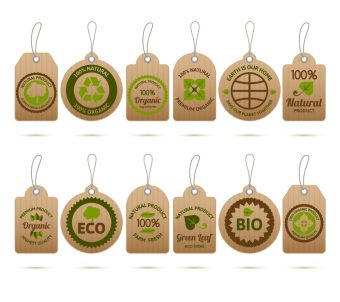
Manipulation is a ubiquitous phenomenon and is as old as humankind. But as society, its values and priorities are changing, manipulation is shaped according to these changes. Consequently, as our time is coloured by ecology, deception has managed to find its place in this sphere as well.
You have probably noticed different symbols and signs that are environment-related more than ever before. Such words include green, sustainable, eco or natural, and in terms of colours, there is frequent use of the term „earthy“ or „green“. Photos, animations and sounds of nature are also hidden somewhere among these terms, like plants, animals, natural landscapes, sounds of birds, rain and more. Although as a society we are making more and more progress in terms of education and awareness of deception in various aspects, as well as environmental awareness, eco-manipulation is present.
Special attention is drawn to the problem of eco-labels and ecological claims on products, that is, whether these products really deserve to be labelled as good for the environment. Such labels should imply that the product reduces the consumption of energy resources, emissions of harmful and dangerous substances, or limited waste generation. Furthermore, there are claims that recycled materials were used during production or that the product can be further recycled or reused, etc. As it happens, these claims are sometimes not true at all or they cover up other, perhaps more dangerous, product properties.
The European Union has been tackling this problem of deception, which is also known as greenwashing, more seriously. Namely, as early as March 2022, the European Commission proposed that the rules on consumer protection be updated, while supporting the green transition. In September of the following year, the Parliament and the Council reached a temporary agreement on the updated rules, to be approved by the deputies in January of this year. Once this happens, the Council will give its official approval. After that, EU Member States are given two years to introduce the new rules into national legislation.
What does this agreement imply?
The agreement aims to improve product labelling and prohibit the use of inaccurate, unverified and ambiguous claims. In particular, the use of general claims such as environmentally friendly, natural, biodegradable, climate neutral and others, which are not backed by relevant evidence, is prohibited. In terms of labels, only those approved by public bodies or obtained through official certification programmes will be allowed.
What particularly caught my attention was the decision to ban claims of neutrality, reduction or positive environmental impact that rely on carbon offsets. In practice, carbon offset means the following – if, for example, two tonnes of CO2 are emitted during the production of a certain product, the company will subsequently plant as many trees as necessary to compensate for those two tonnes of CO2.
Another rule is that product warranty claims must be more visible and there will be a mark that will be assigned to those products that have a longer warranty period.
According to some sources, the first eco-label was created in 1977, prompted by the initiative of the German Ministry of the Environment with the view to improve environmental and consumer protection.
Last but not least, I would like to mention the dolphin-safe label, which shows why it is important to introduce stricter eco-label checks. Namely, such a label is found on tuna products, to highlight that no dolphins were harmed during tuna fishing. This term is also known as bycatch. The film Seaspiracy, which left a very strong impression on me and which I watched several times, explains the concept of bycatch in more detail and brings to our attention worrying figures that show the scope of the endangerment of sea creatures, but also explains the problem of manipulation using the example of the mentioned eco-label. When I started to investigate environmental deception, animal rights and biodiversity loss, this film shed light on a very complex subject and helped me to understand the core of the problem. I suggest that you watch the film, regardless of its accuracy, but as a recommendation to better understand the problem we face every day and to pay more attention in the future when buying products that are presented as environmentally acceptable.
Katarina Vuinac

